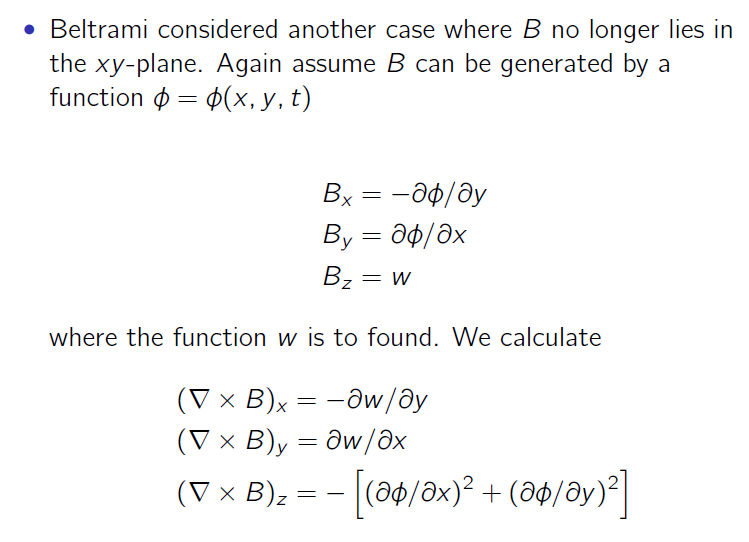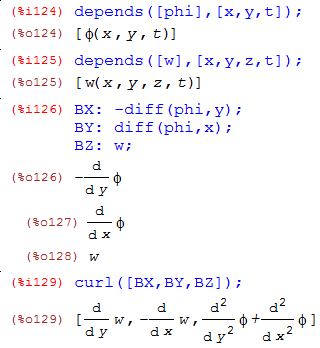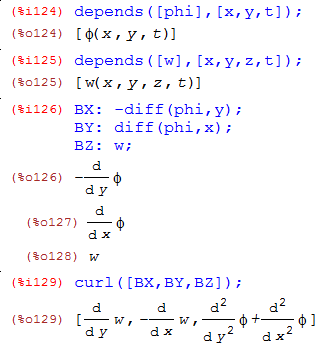Many thanks, ‘t Hooft has certainly taken very heavy implied criticism in the profession, as of course have those responsible for UNCC: Buckingham, Barron, Lakhtakia, Almeida and some retired staff members of physics who panicked when B(3) pseudocriticism started to arrive from Buckingham and Barron. There was a battle with Buckingham consisting of thirty nine exchanges between Oxford and Cambridge men as he tried to block my reply to his post doc Barron in his own journal. This was finally brought to an end by Mansel Davies, and Barron’s ridiculous paper was not published. Buckingham then attacked again in “Science”, and again I was not allowed to reply. A reply was allowed by Alwyn van der Mewe in “Foundations of Physics Letters” and of course accepted by the entire profession as the scientometrics show. Prof. Emeritus van der Merwe comes out of this in a very fine way. They then put the boot in his journal and appointed ‘t Hooft. They may as well have appointed a dalek: exterminate, exterminate. So ‘t Hooft had the comical arrogance to “unpublish” fifteen papers (UFT1 – UFT15) refereed forty or fifty times, with the result that they have been read a few hundred thousand times. So I allowed debate, the other side did not because they had no idea what they were doing. They just put the boot in like bad prop forwards. As Gareth knows, Buckingham started to interfere in my work when I was a Ramsay Memorial Fellow. This was all totally unethical and Buckinhgam, Barron and Atkins deserve international condemnation. I am on quite friendly terms with the students at UNCC, which studies AIAS work quite regularly. For almost twenty years, those responsible for UNCC have not received a single voice in support of what they did, recorded very accurately in the UNCC Saga so that we may try to learn from history to be a little bit more tolerant of new thought. They caused my first wife and myself an immense amount of damage, as one or two people know here, and of course have never congratulated me on any achievement since I resigned in protest. They are not typical of the City of Charlotte, nor are they typical of North Carolina, nor do they represent the American tradition of toleration and democracy. I was naturalized a U. S. Citizen at Cornell five years after UNCC, appointed to the British Civil List ten years after UNCC and three years later raised to Armiger (the untitled nobility). They are also suspected of sending childish hate mail similar to Lakhtakia, so they are completely and utterly discredited, not least among their own students.
This is really interesting. Well done to the three of you yet again. It is clear by now that B(3) was a “missing link” – its neglect (lack of understanding) was preventing progress and created a real “black hole” – an age of speculative nonsense. Now physics is strictly logical again and science in general can move forward. As for ‘t Hooft – the best service he can make to real science is to climb down and recognise the progress. Otherwise he must disappear over the course of time, with his worthless NP, down one of those fictional black holes.
Sent from Samsung Mobile
Excellent!
In a message dated 30/01/2014 08:28:42 GMT Standard Time,
This is indeed a highly interesting development. With “graphics” I meant the copy of the slide, obviously it came through. When I have time I will make some 3D plots of vector fields, in Gnuplot this can be done by one line, if field data is provided in a file.
Horst
EMyrone@aol.com hat am 30. Januar 2014 um 09:10 geschrieben:
This is incisive and interesting as usual. I could not see the graphics from here, maybe they can be send in a pdf or different format, but I can see the Maxima output. These new solutions generalize the B Cyclic Theorem, which is the complex circular frame itself, and not only Lorentz covariant but generally covariant because ECE is a theory based on generally covariant Cartan geometry. The result we are looking for is of course a longitudinal vortex of infinitesimally small radius emerging from helicoidal or more general Beltrami flow of the free electromagnetic field. The vacuum potentials recently developed by Doug and yourself would also have the same characteristics. The infinitesimally thin vortex would be the B(3) field in vacuo. The Beltrami structures are obvious from plane waves, but what we are finding now is that there is a much richer structure of B field components which are all solutions to the higher topology Beltrami equation. The early “criticisms” of B(3) were vindictive rubbish, they did not even understand that B(3) is a result of higher topology. These were Lakhtakia, Buckingham and Barron initially, then from the Buckingham environment, e.g. Rikken and van Enk. These papers would often appear behind my back with no warning, in a completely unethical way, and every single one of them was replied to in great detail to the evident satisfaction of the entire international community of scientists and engineers. These were followed later with the UNCC and ‘t Hooft conspiracies, generally regarded as scraping the bottom of the dustbin in the history of physics and completely ignored by the profession as acute personal animosity. I will study these new solutions today to see if I can reduce them to something like the B Cyclic Theorem. The Nobel Prize nominations for B(3) appeared after these early personal attacks had been dealt with. The ‘t Hooft conspiracy was intended purely for the purpose of preventing me getting a Nobel Prize, because that would be a challenge to mediaeval dogma. Both UNCC and ‘t Hooft have been implicitly criticised heavily for years through the readership of my “UNCC Saga” and “Diplomatic Objection to ‘t Hooft” by Gareth Evans. Now we are making strong progress forward, we have always made strong progress forward. The appearance of stalkers and hate groups destroyed the credibility of these “critics” completely. We must sit back and enjoy the great success of AIAS, and above all, enjoy our work like a cookie in a Chinese restaurant. Not many groups get half a dozen Nobel Prize nominations and a nomination is as nice as a prize. I did no lobbying at all for the Nobel Prize, all the nominations arrived spontaneously.
To: EMyrone@aol.com
Sent: 29/01/2014 19:18:37 GMT Standard Time
Subj: Re: Analytical Solutions of the Beltrami equation
I hope the graphics come through.
The following should hold:

My result is:

This means: there is a sign error in the slide set, and the Z component contains second derivatives, not squared first derivatives. Nevertheless these equations should allow us to construct quite general solutions of the Beltrami equation. A suitable combination of phi and w has to be found. See the example in section 5 of the attached. I did not succeed in adding a z dependence to w, that requires further trials.
Horst
-
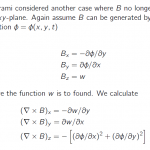
-
jjgdhhef2
-
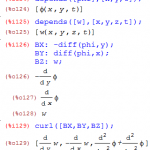
-
jjdgjejf2


